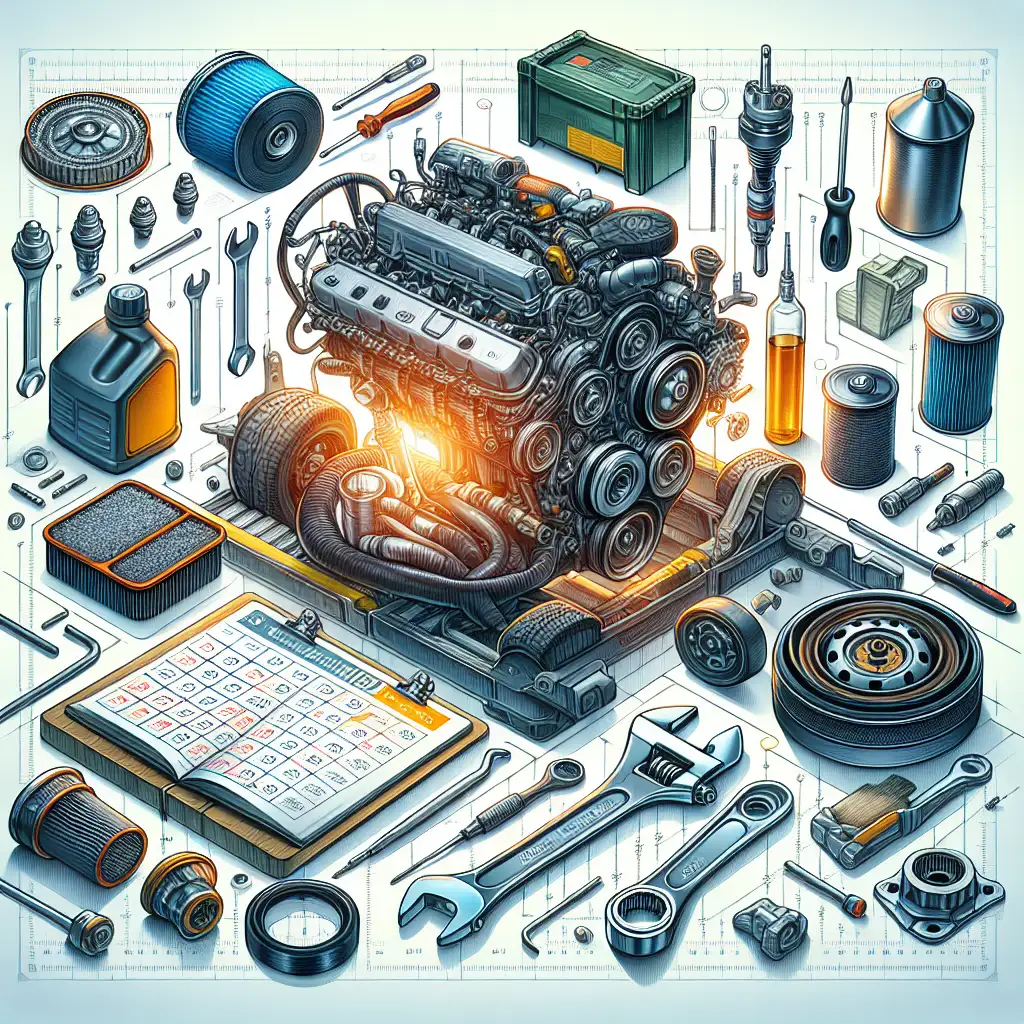Understanding Your Car's Maintenance Schedule: How to Read and Follow Your Vehicle's Recommended Maintenance Intervals
Learn how to keep your car running smoothly by understanding and following its maintenance schedule.

Keeping your car in top condition is crucial for safety, performance, and longevity. One of the best ways to ensure your vehicle remains reliable is by following its maintenance schedule. But what exactly is a maintenance schedule, and how can you make sense of it? In this article, we'll break down the essentials of your car's maintenance schedule, helping you understand and follow it with confidence.
What is a Maintenance Schedule?
A maintenance schedule is a list of recommended services and inspections that your car manufacturer suggests at specific intervals. These intervals are usually based on time (months or years) or mileage (kilometers or miles). The schedule is designed to keep your car running efficiently and to prevent potential issues before they become major problems.
For example, you might see recommendations for oil changes every 5,000 miles (8,000 kilometers) or six months, whichever comes first. Other common maintenance tasks include tire rotations, brake inspections, and fluid level checks.
Why is Following the Maintenance Schedule Important?
Adhering to your car's maintenance schedule is important for several reasons:
- Safety: Regular maintenance helps ensure that your car's critical systems, like brakes and steering, are functioning properly.
- Performance: Keeping up with maintenance can improve your car's fuel efficiency and overall performance.
- Longevity: Routine care can extend the life of your vehicle, saving you money in the long run.
- Resale Value: A well-maintained car typically has a higher resale value.
How to Read Your Car's Maintenance Schedule
Your car's maintenance schedule can usually be found in the owner's manual or a separate maintenance booklet. Here's how to read it:
- Locate the Schedule: Check your owner's manual or the manufacturer's website for the maintenance schedule specific to your car model and year.
- Understand the Intervals: Look for the recommended service intervals, which are often listed in both time and mileage. For example, "every 10,000 miles or 12 months."
- Identify Key Services: Note the specific services required at each interval, such as oil changes, filter replacements, and inspections.
- Keep Track: Use a logbook or digital app to record when each service is completed, helping you stay on top of future maintenance needs.
Common Maintenance Tasks Explained
Here are some common maintenance tasks you might encounter:
- Oil Change: Replacing the engine oil and oil filter to keep the engine lubricated and running smoothly.
- Tire Rotation: Moving tires from one position to another to ensure even wear and extend tire life.
- Brake Inspection: Checking brake pads, rotors, and fluid to ensure the braking system is safe and effective.
- Fluid Checks: Ensuring all fluids (coolant, brake, transmission) are at the correct levels and in good condition.
FAQs About Car Maintenance Schedules
Q: Can I follow a maintenance schedule if I drive less than average?
A: Yes, even if you drive less, time-based intervals are still important. Fluids and parts can degrade over time, regardless of mileage.
Q: What if I miss a scheduled maintenance?
A: Try to reschedule as soon as possible. Missing maintenance can lead to bigger issues down the road.
Conclusion
Understanding and following your car's maintenance schedule is a key part of vehicle ownership. By keeping up with regular maintenance, you can ensure your car remains safe, efficient, and reliable. Think about what features matter most to you. Do you need extra cargo space? Or perhaps a vehicle with better fuel efficiency? Whatever your needs, staying informed about your car's maintenance will help you make the best decisions for your vehicle's care.
 CarChooser
CarChooser